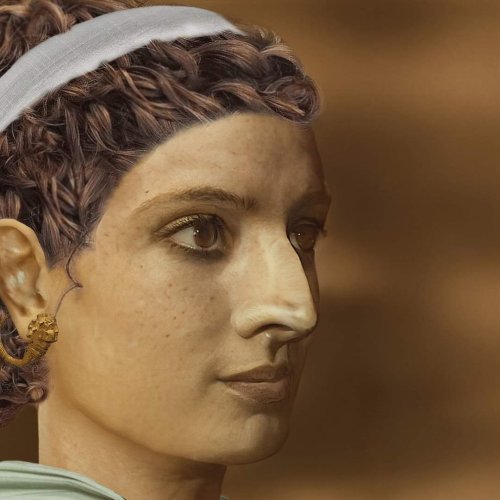You are using an out of date browser. It may not display this or other websites correctly.
You should upgrade or use an alternative browser.
You should upgrade or use an alternative browser.
Photos with Knowledge
- Thread starter Rizwan
- Start date

The mummy of the general and commander of the Egyptian army
"Osip Omphen Ferro"
Long live General Osip Omphen Ferro.
The year 1500 B.C.
The general led the legions of King Thutmose III in 16 campaigns and battles, in which he won all.
When he grew old, King Thutmose III's queen built a large palace for him next to the royal palace, and upon his death, at the age of sixty, she received a grand royal funeral.
His mummy, one of the best preserved in the world, is on display at the Niagara Falls Museum.

Facial reconstruction of the Ptolemaic Egyptian queen Cleopatra VII (r. 51-30 BCE). This artistic representation of Cleopatra is primarily based on a bust from the Berlin Altes Museum, widely agreed to depict Cleopatra. In addition to the Berlin portrait, the features in this reconstruction are based upon contemporary coin portraits and a bust from the British Museum which may depict Cleopatra. #History #CleopatraVII

This is not a carved wooden hand, but a close-up of a 2300-year-old Iron Age swamp body called the "Old Croghan Man". A swamp body is a human corpse that has been mummified naturally in a peat swamp. He was found in 2003 on Croghan Hill in Co. Offaly in Ireland.. The man's apparently manicured nails led to speculation that he wasn't someone who did manual labor, so he possibly had a high status. The man was buried in a swamp (probably once a lake) at the foot of an ancient hill that was used for king ceremonies by druids, probably as a sacrifice to the gods.
The body is now on display at the National Museum of Ireland in Dublin.

A bronze and silver strigil from Pompeii. It was used to scrape olive oil and dirt from the body prior to bathing. It was the Roman method to cleanse and exfoliate the skin. If someone else was to use it on you with pressure applied by both arms then it has the added bonus of a deep tissue massage. It is decorated on the handle with an image of an athlete.
Photo: Public Domain

The Khufu ship is an intact full-size solar barque from ancient Egypt that was sealed into a pit around 2500 BC, during 4th Dynasty of the Old Kingdom of Egypt at the foot of the Great Pyramid of pharaoh Khufu in the Giza pyramid complex. It was apparently part of the extensive grave goods intended for use in the afterlife.















